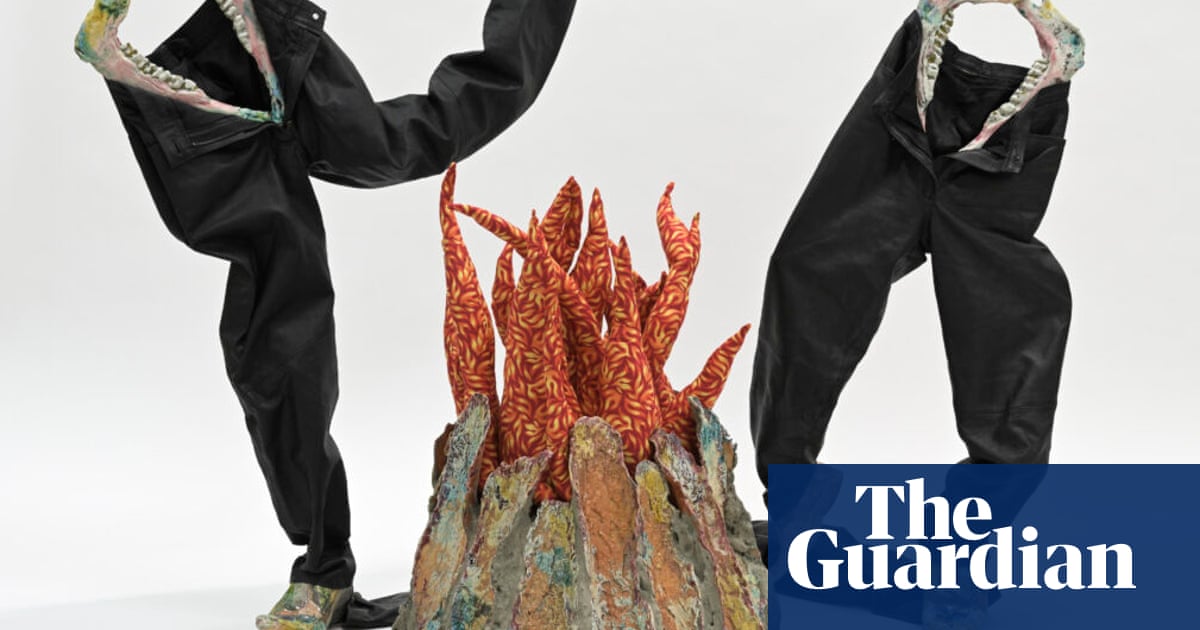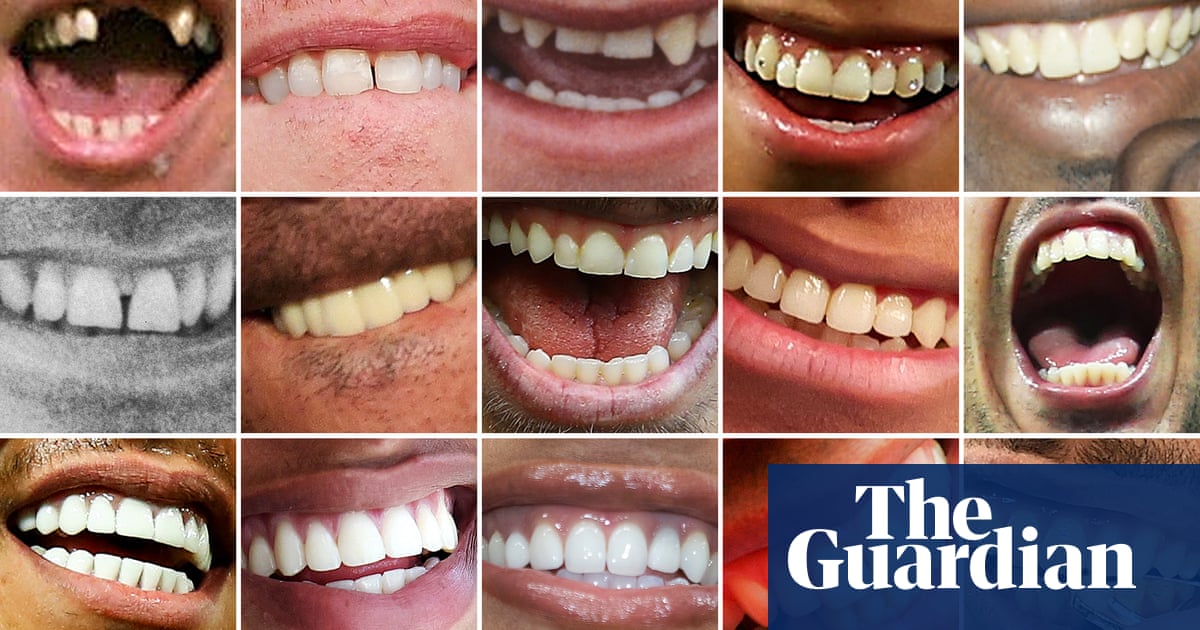
In search of the roots of our current ecological crisis, the writer Amitav Ghosh, in his most recent book The Nutmeg’s Curse, looks back to the suppression of witchcraft in 16th-century Europe. He views this as the moment human violence towards the natural world came to supersede an older wisdom, inherent in magical practices around the world, that “landscapes are neither inert not mute, but imbued with vitality”.
It’s a theme that plays out with dramatic effect in two major exhibitions currently running across south-west England – Earth Spells: Witches of the Anthropocene at the Royal Albert Memorial Museum (Ramm) in Exeter and Super Natural at the Eden Project in Cornwall.
Gestated through the Covid pandemic years, Earth Spells was curated by Lara Goodband and Gemma Lloyd, who were inspired by the donation to Ramm of a small cauldron that had belonged to Elizabeth Webb (circa 1840-1913), AKA the White Witch of Dartmoor. The idea was to explore cosmologies and ecological relationships that the object’s storied history pointed them towards. Stepping inside the exhibition, you’re immediately confronted by Mercedes Mühleisen’s Lament of Fruitless Hen, a disorienting video installation where a hen’s body has been fitted with an egg-shaped human head that spews words without meaning.
Around the corner, Estonian artist Kris Lemsalu’s Baubo Dance fuses Greek myth and folk culture with bawdy effect to present a pair of laughing, dancing toothed vaginas on legs, recalling the story of the misfit Greek goddess Baubo, who lifted the grief of Demeter for her lost daughter Persephone by flashing her vulva and making her laugh.
Elsewhere, Caroline Achaintre’s hand-tufted wool hanging, Ghost Duck, and Florence Peake’s multidisciplinary work The Lichen Exists lead us through a liminal space of veils suspended from the ceiling into the experience of an animate Earth – “the lichen exists,” writes Peake, “the moss exists / And has no trouble in its own place, life, situation / You are a disturbance.”
New films fill the space with mesmerising soundscapes of drumming, wind and rain: Ferocious Match by Peake, where the artist performs gestures of inner turmoil as an act of surrender to a storm, and Labour: Birth of a New Museum, where, in the privacy of a closed exhibition hall at Ramm, the 2022 Jarman film-award winner Grace Ndiritu leads a circle of pregnant women on a shamanic journey in search of the soul names of their unborn children. These rooms generate an intensity that rises to a fever pitch beneath Emma Hart’s Good Vibrations, a cluster of 13 ceramic pieces painted with concentric circles that protrude awkwardly from the wall, occupying a strange hinterland between 2D and 3D in a way that carries feelings of an eerie presence, and where Kiki Smith’s tapestry Sojourn (2015) renders plant and animal subjects as cohabitants of a mythical realm.
Cornwall resident Lucy Stein’s explosive paintings, augmented by her energetic engagement with the Ramm archive, crown the multisensory experience of this exhibition, reflecting the artist’s intimation of “fertility as a psychic space”. In works including III Eternity and Misericord, her striking palette evokes the colours of a lithium flame and speaks to Stein’s interest in the liquid layers of the Earth, the lithium-rich Cornubian basin that runs beneath the surfaces of Cornwall and Devon.
Here, her vision of place is always bursting with the richness of secret, inner worlds and the juxtaposition of objects selected from the archive to set around her own work – bronze age vessels from Devon, an ancient goddess from Gaul, a bangle from Tripoli, a set of stuffed owls – moving time and histories to collapse in on one another with dizzying effect.
No less accomplished, the curatorial vision of Misha Curson and Hannah Hooks that drives Super Natural at Eden establishes a conversation between diverse cultural histories, pointing us all the time towards an underlying, unifying wisdom that runs through a shared experience of the planet.
On the grounds of Eden, Swedish artist Ingela Ihrman, whose exhibition Nocturne also runs at Gasworks in London until 30 April, repeats a sculpture, First Came the Landscape, made last year for the Uppsala konstmuseum. A beech tree, toppled in a storm, is chopped up and remade on the ground as an anatomically precise, giant skeletal figure. Perhaps it depicts the remnants of a whale or even primordial man. It’s a childlike gesture that will remain where it is to interact with the coming seasons, inviting us to observe its decay and providing a meditation on fragility that’s at once playful and profound.
Inside, the main exhibition is introduced by the visionary film Matrix Vegetal by Chilean artist Patricia Domínguez, an eco-futurist installation displayed inside a sculpture of a mandrake plant. Inspired by the ayahuasca-supported teachings of Domínguez’s shaman guide Amador Aniceto, the work takes us on a journey through indigenous wisdom into the inner structures of vegetal life. This journey has echoes in the collaboration between Eduardo Navarro and philosopher Michael Marder, the audio piece Vegetal Transmutation, in which we hear evolutionary ecologist Monica Gagliano implore the listener not to “horde thoughts in your brain, instead let them circulate like sap in a plant”.
Meanwhile Ai Weiwei’s cast-iron sculpture of a giant Brazilian tree root gives form to the dynamic structures of rooting and uprootedness, themes he also explores in relation to human migration in his 2017 film Human Flow. The hidden life of plants emerges as a related space where we can make sense of dimensions of human existence from the historical to the physiological to the metaphysical, and this realisation in turn points us towards a sense of our own interconnectedness with multispecies life in all its forms.
Similarly, in the hands of Kedisha Coakley and Iman Datoo, everyday food items – from the passion fruit and persimmon to the potato – point us towards greater recognition of how histories of slavery and empire underpin our age of ecological collapse. Coakley’s installation Horticultural Appropriation interrogates the conventions of the collector’s cabinet, rendering objects from her daily life as tactile, bronze miniatures and placing them on her own version of the colonial shelf to raise questions about how meaning and value are bestowed and what reparation might mean in light of uneven environmental histories.
Datoo’s filmKinnomic Botany is a brilliant dissection of the potato’s cultural history. It opens our eyes to the reductive lens that European colonisation has wrought on our sense of the planet and reminds us that while 15 kinds of potato are readily available in UK supermarkets, the Quechuan language has 5,000 names for potato varieties and “over 30 words for potato itself”. Embodying the role of the shaman in her own style, Datoo instructs us to look again and see how “the potato in your hand is a multiworld”.
With such strong work on display across these two exhibitions, it’s thrilling to see emerging British artists like Coakley and Datoo thriving, too, placing themselves at the leading edge of environmentally focused art.
Earth Spells: Witches of the Anthropocene is at the Royal Albert Memorial Museum, Exeter, until 7 May; Super Natural is at the Eden Project, Cornwall, until 1 May












